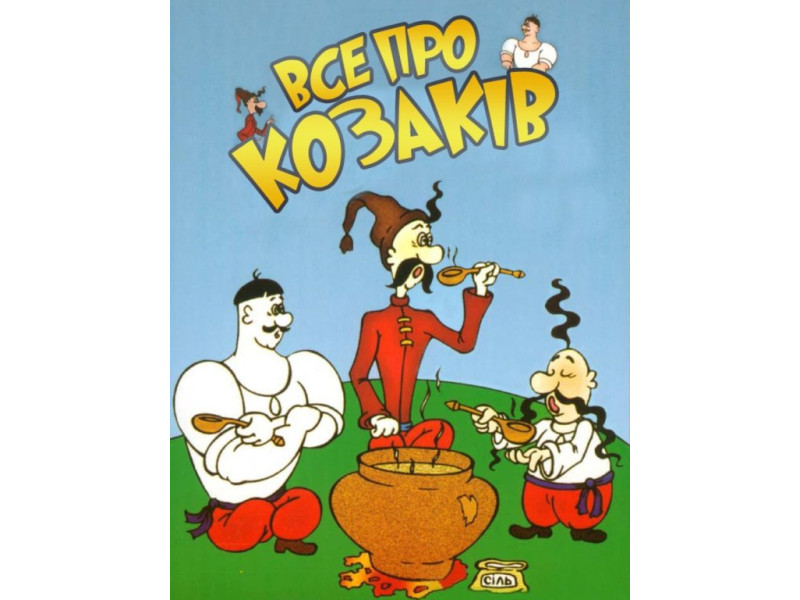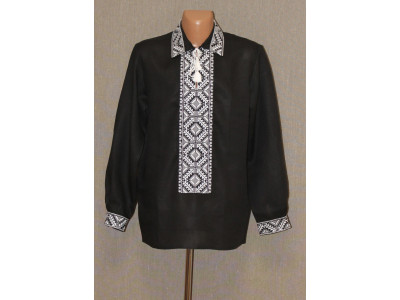 Ukrainian Cossacks are an extremely interesting and important phenomenon in the history of both the country and the world. The Cossacks surprised and fascinated, inspired artists to create their masterpieces, preserved their native culture and customs. Mentions of the Cossacks are also found in foreign sources. However, the Cossacks were not just warriors, because along with strength, courage, intelligence, cunning, there is always an element of mystery and mysticism.
Ukrainian Cossacks are an extremely interesting and important phenomenon in the history of both the country and the world. The Cossacks surprised and fascinated, inspired artists to create their masterpieces, preserved their native culture and customs. Mentions of the Cossacks are also found in foreign sources. However, the Cossacks were not just warriors, because along with strength, courage, intelligence, cunning, there is always an element of mystery and mysticism.
So maybe the Cossacks were not such ordinary knights?
We invite you to immerse yourself in the fascinating world of the Cossacks with a selection of the most interesting facts about them.
One of the important advantages of the Cossacks, besides strength, weapons and unsurpassed combat skills, was their cunning and no small amount of intelligence. The Cossacks almost always sneaked up on their enemies unnoticed and caught them by surprise, thereby ensuring themselves a better chance of victory.
 We cannot fail to mention the unique and original Cossack boats used for campaigns. Strange as it may seem, Cossack boats can be safely called the prototype of modern submarines, because they were built in a special way, using a double bottom. Ballast was placed between the two bottoms of the boat, thanks to which the boat sank into the water, which made it possible to swim to the enemy unnoticed. Before the battle, this ballast was thrown out, and the boat unexpectedly for the enemy surfaced, which was a real shock for the enemy, because no one even thought that a boat with Cossacks could emerge from the depths of the sea. In order to achieve the same effect of surprise, another method was often used, namely, turning the seagulls upside down. Cossack seagulls were and remain unsurpassed examples of shipbuilding, these boats were extremely strong, but at the same time light and maneuverable.
We cannot fail to mention the unique and original Cossack boats used for campaigns. Strange as it may seem, Cossack boats can be safely called the prototype of modern submarines, because they were built in a special way, using a double bottom. Ballast was placed between the two bottoms of the boat, thanks to which the boat sank into the water, which made it possible to swim to the enemy unnoticed. Before the battle, this ballast was thrown out, and the boat unexpectedly for the enemy surfaced, which was a real shock for the enemy, because no one even thought that a boat with Cossacks could emerge from the depths of the sea. In order to achieve the same effect of surprise, another method was often used, namely, turning the seagulls upside down. Cossack seagulls were and remain unsurpassed examples of shipbuilding, these boats were extremely strong, but at the same time light and maneuverable.
 Interestingly, one of the first democratic associations in the world is considered to be the Zaporizhian Sich. All decisions and issues regarding life, livelihood and activity were resolved at general meetings-councils, by voting. And if we consider the circumstances that prompted people to come to the Sich, namely social injustice, then this fact does not seem so strange.
Interestingly, one of the first democratic associations in the world is considered to be the Zaporizhian Sich. All decisions and issues regarding life, livelihood and activity were resolved at general meetings-councils, by voting. And if we consider the circumstances that prompted people to come to the Sich, namely social injustice, then this fact does not seem so strange.
Also, the Zaporizhian Sich is rightly considered the first political formation on the territory of our country. The Sich had all the signs of a republic, was completely independent, and most European countries tried to establish diplomatic relations with it.
 It is a mistake to think that in peacetime the main pastime of the Cossacks was drinking. Of course, strong drinks were not always available, but still the Cossacks enjoyed cultural recreation, they played various musical instruments, danced, sang songs and arranged show fights for the amusement of themselves and others. The Cossacks also had a lot of household chores, because there were no women in the Sich at all.
It is a mistake to think that in peacetime the main pastime of the Cossacks was drinking. Of course, strong drinks were not always available, but still the Cossacks enjoyed cultural recreation, they played various musical instruments, danced, sang songs and arranged show fights for the amusement of themselves and others. The Cossacks also had a lot of household chores, because there were no women in the Sich at all.
Drinking strong drinks during campaigns was strictly prohibited, and violating this prohibition was tantamount to treason and could be punished by death.
Of course, the family life of the Cossacks was difficult, and sometimes it did not exist at all, but the Cossacks found friends-brothers in the Sich, for whom they were ready to do anything. There are speculations that the Cossacks had a special rite-ritual, during which the brothers-soldiers exchanged their body crosses, which personified loyalty to each other.
 The laws and regulations in the Sich were strict and sometimes cruel. For theft or murder of a fellow countryman, the culprit not only had to pay with his life, but did so in a rather cruel way: he could be beaten with clubs or even buried alive in a coffin with the deceased. Perhaps it was not at all humane, but the discipline of the Cossacks was excellent.
The laws and regulations in the Sich were strict and sometimes cruel. For theft or murder of a fellow countryman, the culprit not only had to pay with his life, but did so in a rather cruel way: he could be beaten with clubs or even buried alive in a coffin with the deceased. Perhaps it was not at all humane, but the discipline of the Cossacks was excellent.
An extraordinary phenomenon in the Cossack world were special boys and men, the so-called charakterists. According to the beliefs of their contemporaries, they descended from ancient, still pagan, magi, who were able to predict the future and possessed secret knowledge. According to the theories of some scientists, the fact of the existence of charakterists can be explained by the following: after the adoption of Christianity in Russia, the pagans began to be persecuted by the Greeks and princes. Therefore, the magi began to flee and create small associations - sichs, away from large cities. It was in such associations that the magi taught warriors all the features of martial arts, customs, rituals and passed on their knowledge. The following is mentioned about the Cossacks-characters: "neither water, nor fire, nor saber, nor ordinary, not silver, bullets could take them", that they "could float on boats on the floor, open locks without keys, cross reservoirs on mats made of wicker or cloth felt, see around them for several versts, take red-hot balls and iron in their hands, climb in and out of tightly sewn or tied bags, turn riders into birds, people into bushes, and they themselves could "flip over" into cats, climb into a bucket and swim in it under water for thousands of layers"...
 The Cossacks not only used their own knowledge, they enriched and borrowed their skills from the achievements of other peoples. Thus, there are references that foreign guests and representatives of about 20 nationalities lived in the Zaporizhian Sich. In addition to the guests, the Cossacks, their foremen and hetmans traveled quite a lot, getting acquainted with the culture, scientific achievements and customs of other nations, thereby enriching their own.
The Cossacks not only used their own knowledge, they enriched and borrowed their skills from the achievements of other peoples. Thus, there are references that foreign guests and representatives of about 20 nationalities lived in the Zaporizhian Sich. In addition to the guests, the Cossacks, their foremen and hetmans traveled quite a lot, getting acquainted with the culture, scientific achievements and customs of other nations, thereby enriching their own.
There was no common flag among the Cossacks, each hundred or regiment had its own banners, but starting from the 17th century, there are references to the main flag of the Zaporizhian Sich. This banner depicted the Archangel Michael on a red background on one side, and on the other a white cross, a golden sun, a crescent moon and stars. And a peculiar symbol-coat of arms was the image of a Cossack with a musket.
It is unusual and interesting that a six-pointed star was quite often depicted on Cossack flags. According to ancient beliefs and beliefs, it was a sign of harmony, which could symbolize a separate clan or be a symbol of magic.
 One of the essential attributes of a Cossack was his hairstyle and mustache, according to most researchers, the Cossacks inherited this tradition from their pagan ancestors. The tradition of shaving the face and head reached Kievan Rus from local tribes, and over time it also reached the Zaporizhian Cossacks. According to historical research, the ancient Slavs did not have any deity with long hair or a beard, so such an appearance was considered divine. Although, contrary to this theory, there is a legend that the Cossacks considered themselves too sinful to go to heaven, and therefore maybe the Lord would have mercy on them and pull them out of hell by their forelock. The Cossacks believed that if they died in war, an angel would carry them to heaven by their forelock. Interestingly, such a legend and hairstyle are inherent not only to Ukrainian Cossacks. In ancient times, herrings were cut by Egyptian pharaohs, Indians from distant tribes, Tatars, Persians, Japanese samurai and many others. References to this hairstyle can also be found in various fairy tales and legends, for example, the Turkish Jin. For almost all peoples where the “herring” hairstyle was used, it symbolized a “ray of the sun”, the main difference between the Cossack herrings and other peoples was its location, so the Cossacks cut their bangs on their forehead, while others did it on the back of the head or along the center of the head.
One of the essential attributes of a Cossack was his hairstyle and mustache, according to most researchers, the Cossacks inherited this tradition from their pagan ancestors. The tradition of shaving the face and head reached Kievan Rus from local tribes, and over time it also reached the Zaporizhian Cossacks. According to historical research, the ancient Slavs did not have any deity with long hair or a beard, so such an appearance was considered divine. Although, contrary to this theory, there is a legend that the Cossacks considered themselves too sinful to go to heaven, and therefore maybe the Lord would have mercy on them and pull them out of hell by their forelock. The Cossacks believed that if they died in war, an angel would carry them to heaven by their forelock. Interestingly, such a legend and hairstyle are inherent not only to Ukrainian Cossacks. In ancient times, herrings were cut by Egyptian pharaohs, Indians from distant tribes, Tatars, Persians, Japanese samurai and many others. References to this hairstyle can also be found in various fairy tales and legends, for example, the Turkish Jin. For almost all peoples where the “herring” hairstyle was used, it symbolized a “ray of the sun”, the main difference between the Cossack herrings and other peoples was its location, so the Cossacks cut their bangs on their forehead, while others did it on the back of the head or along the center of the head.
 The Cossacks had an interesting custom of always keeping their huts open, so a traveler or passerby could go in there, rest, eat, visit, and continue on their way, even if the owner was not at home. However, in contrast to this hospitality, there was a strict rule that nothing could be taken out of the hut, otherwise there would be a severe punishment. Also, if someone found some thing in the Sich, it would be tied to a high stick or pole, and if the owner was not found within 3 days, this thing would become the property of the one who found it.
The Cossacks had an interesting custom of always keeping their huts open, so a traveler or passerby could go in there, rest, eat, visit, and continue on their way, even if the owner was not at home. However, in contrast to this hospitality, there was a strict rule that nothing could be taken out of the hut, otherwise there would be a severe punishment. Also, if someone found some thing in the Sich, it would be tied to a high stick or pole, and if the owner was not found within 3 days, this thing would become the property of the one who found it.
Rumor has it that an oak tree, glorified by Cossack legends, poems, and songs, still grows in Khortytsia. Some of them tell about the rites and rituals that were performed before the battle. Local residents are convinced that the oak tree is already 700 years old.
 The origin of the term "Cossack" is shrouded in various theories. According to some Polish scholars, the term "Cossack" came from the name of the famous Cossack leader, who skillfully fought against the Tatar invaders. Another theory of the origin of this term is based on the word "goat", because the Cossacks were cunning and could penetrate anywhere. Translated from Turkish, "Cossack" means "robber, vagabond", it is logical to assume that this was the nickname the Turks gave to Ukrainian soldiers. Apparently, it was this nickname that stuck, but over time it lost its negative meaning.
The origin of the term "Cossack" is shrouded in various theories. According to some Polish scholars, the term "Cossack" came from the name of the famous Cossack leader, who skillfully fought against the Tatar invaders. Another theory of the origin of this term is based on the word "goat", because the Cossacks were cunning and could penetrate anywhere. Translated from Turkish, "Cossack" means "robber, vagabond", it is logical to assume that this was the nickname the Turks gave to Ukrainian soldiers. Apparently, it was this nickname that stuck, but over time it lost its negative meaning.
An interesting historical fact is that Ukrainian Cossacks also reached America. For example, John Smith, the founder of one of the first British settlements on the American continent, participated in the fight against the Turks and Tatars and was captured. Smith was rescued from captivity by Zaporozhian Cossacks, he stayed in the Sich, from where he returned to England, where he invited his rescuers. It was during this period that the English decided to establish the first colony in America. John Smith set out on this journey, taking with him several Cossacks who expressed a desire to travel with him. This is how Ukrainians helped to found America.



Write a comment